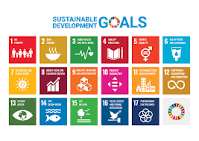HOW PEOPLE INTERACT WITH URBAN GREEN SPACES
Amid the concrete, noise, and hurried footsteps of cities like Kathmandu
and Pokhara, pockets of green emerge as quiet sanctuaries—parks, gardens,
riverbanks—offering respite from the daily grind. These urban green spaces are
more than just patches of grass or clusters of trees. They are vital breathing
grounds, where people not only connect with nature but also with each other,
with their own thoughts, and with their communities.
Walking through a city park early in the morning, one might see a diverse
tapestry of interactions. Elderly men gather in the shade, engaged in animated
discussions or playing carrom and chess, their laughter mixing with
birdsong. Mothers push strollers along winding paths, while children chase
kites or feed sparrows. Joggers and yoga practitioners carve out time for
health amidst the urban hustle. Each presence reveals a different relationship
with the green space, shaped by age, need, and habit.
For many urban residents, these spaces serve as informal meeting grounds.
In neighborhoods where private gardens are rare and homes closely packed, parks
and green strips become communal backyards—a place to socialize, to celebrate,
to escape confinement. Festivals and religious rituals occasionally spill into
these areas, transforming them into vibrant hubs of cultural expression. In
this way, green spaces act as extensions of the community, nurturing social
bonds that might otherwise weaken in dense, impersonal cityscapes.
But interaction with urban greenery is not only social—it is deeply
personal. Sitting beneath a tree with a book, sketching in a quiet corner, or
simply watching clouds drift overhead offers moments of mindfulness and
restoration. In a world dominated by screens and schedules, these interactions
remind us of the slow, cyclical rhythms of nature, inviting calm and
reflection.
Yet, these spaces also reveal challenges. Urban green areas often struggle
against encroachment, pollution, and neglect. Trash scattered along pathways,
broken benches, or overgrown patches tell stories of care deferred. Access is
uneven, too. Not every neighborhood boasts safe, well-maintained parks, which
can exacerbate social inequalities. For many, green spaces are not easily
reachable, limiting their potential benefits.
Interestingly, how people engage with urban greenery is also evolving.
Community-led clean-up drives, tree-planting initiatives, and weekend markets
reflect a growing awareness and collective responsibility toward these spaces.
Social media groups share plans for park yoga sessions or birdwatching,
blending tradition with modern technology. These efforts highlight a shared
desire not only to enjoy but also to protect and revitalize urban nature.
In essence, urban green spaces serve as mirrors reflecting the complexities
of city life—its diversity, its needs, and its aspirations. They remind us that
even within the concrete jungle, nature can thrive and nurture. The ways people
interact with these spaces speak volumes about their values, their longing for
connection, and their capacity to care.
As cities continue to grow, preserving and enhancing urban green spaces
should become a priority—not just as amenities but as vital components of a
healthy, inclusive urban life. Because in these patches of green, amidst trees
and flowers, we find the seeds of community, wellbeing, and hope for a more
balanced coexistence with the world around us.

Comments
Post a Comment